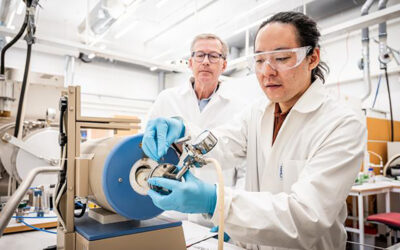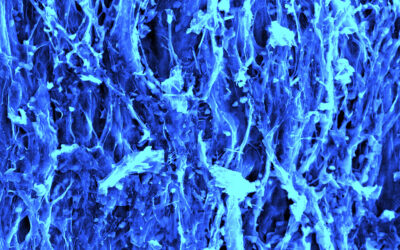Advances in materials science and engineering have led to an intriguing class of structural materials called self-sensing materials, where the material is engineered to translate deformations in its structure into measurable or observable changes. This means structures have the ability to monitor their own health, much like the human body.
This comes in handy in areas where the structural integrity of light-weight materials is of the utmost importance, such as in cars, aircraft, and other vehicles. However, while their application could result in better safety profiles, research in this area is limited.
In a recent study published in Advanced Engineering Materials, researchers from the University of Glasgow, Massachusetts Institute of Technology (MIT), and the University of Cambridge sought to develop a self-sensing cellular composite made from multi-wall carbon nanotube (MWCNT)/polypropylene random copolymer (PPR) filament feedstock created via 3D printing.
The design uses cellular materials, which occur in nature and are characterized by their porous microstructure, such as those found in wood, cork, beehives, sponge, and bone. “Periodic cellular solids, usually referred to as lattices, possess a desired combination of properties such as strength and toughness,” explained Shanmugam Kumar, professor at the University of Glasgow, and one of the study’s authors.
“The use of low-cost fused filament fabrication additive manufacturing for the manufacture of lattice structures with tunable properties can find applications in an array of fields, such as patient specific orthoses, scaffolds for tissue engineering, electrodes for energy storage devices and smart, lightweight aerospace and automotive structures,” added Brian Wardle, professor of aeronautics and astronautics at MIT, and another of the study’s authors.
Synthetic versions of cellular materials can be engineered to enhance mechanical attributes, such as energy absorption, stiffness, and strength, while imparting new functionalities. However, to accomplish this, low density lattices with functional and tunable attributes such as self-sensing or self-healing properties are needed and have thus far been seldom explored. “Self-sensing lattices capable of exhibiting complex multifunctionalities can’t be easily realized via conventional manufacturing routes,” said Kumar.
Self-sensing materials enable the transduction of mechanical stimuli into electric signals, and can be engineered either by embedding sensing elements or by creating smart composites which exhibit intrinsic sensing in response to external stimuli.
The team followed the latter approach in their study. Specifically, they incorporated electrically conductive carbon nanostructures into an otherwise non-conducting thermoplastic polymer to create electrically conductive lattices. “Such smart lattices exhibit change in electrical resistance, when subjected to mechanical stimuli — usually referred to as piezoresistivity,” said Kumar. “We leveraged the piezoresistive behavior of composite lattices for in situ strain and/or damage sensing. These smart lattices are capable of monitoring environments [in addition to] fulfilling mechanical requirements.”
The team used 3D printing to create their sensing lattices, an approach they hope will make their material more commercially accessible. “The tunable multi-functional performance of [our] cellular composites provides guidelines for the design and development of composite lattices with advantaged structural and functional properties for an array of applications, such as patient specific orthoses, scaffolds for tissue engineering, and smart lightweight structures,” said Vikram Deshpande, professor in the Department of Mechanical Engineering at Cambridge University.
Next steps will involve assessing the performance of these cellular structures under repetitive cyclic loading and exploring micro- and nanoscale versions of their smart 3D lattices.
“Scaling-up manufacturing, producing repeatable and reliable smart lattices, and performing application-dependent field tests are the hurdles to be overcome before commercialization and widespread application,” concluded Kumar.
Reference: Shanmugam Kumar et al., Multifunctionality of Nanoengineered Self-Sensing Lattices Enabled by Additive Manufacturing, Advanced Engineering Materials (2022). DOI: 10.1002/adem.202200194
Feature image: Simon Lee on Unsplash

















